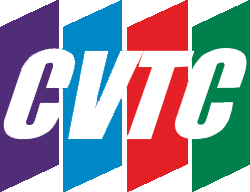One of the biggest disruptions that people faced in the spring of 2020 as a result of the Covid-19 pandemic was the abrupt closing down of schools. It was almost literally kids went to school one day and the next day, they did not, depending on where you were. In Prince George BC, we were fortunate that the closure hit right up against spring break anyway so there was a tiny buffer, but it was still quite jarring.
As July comes to a close and August looms, parents, university students and prospective students, are looking anxiously at September and wondering what the fall will hold. After all, autumn not only will see a continued simmering of Covid, but also the usual round of influenza that knocks kids out every year. With schools scrambling to figure out how to safely reopen and more universities and colleges worrying about enrollment rates and keeping students on, it’s no wonder many people are starting to get stressed out trying to figure out what to expect.
We don’t have a crystal ball of course, but we can look at what is already being done and make some guesses. So what can you plan for when it comes to looking at the autumn?
Smaller Classes, Bigger Spaces
One of the best and easiest ways to combat the spread of covid is to keep physical distancing in mind – keeping two metres apart as much as possible. Therefore, the first thing that schools are doing is slashing class sizes. Most schools in BC are not operating at roughly fifty percent capacity with the other fifty percent tuning in from home via video chat or going to classes on alternating days (or both). Depending on the size of the room, class sizes will vary, but it’s fairly uncommon that we will see class sizes larger than perhaps twelve. A two days on, two days off, one day online schedule is a prime example of juggling classes of twenty-five or thirty and making it safe for kids to come to school.
On the post-secondary side, the days of one hundred or more student classes are probably gone. More and more adult learners will likely opt to tune in over their computer, if possible, and only come in to do small study groups or meet with their professor if required. Many of the classes that are being offered are now being encouraged to be online rather than in person and in person classes have also shrunk down.
While this is beneficial for people who prefer to work in smaller classes and get more attention, it’s also problematic because many learners do not cope well with online learning. It can also be more difficult to get the one-on-one time since teachers still have to maintain physical distancing. But reducing class sizes is the first and most effective way to halt the spread of illness, even if it does make for a logistical and scheduling hazard.
A Lot More Hygiene
We would hope that people were being clean before Covid-19, but you’re certainly going to see an uptick in it now! At CVTC, we installed sanitizer dispensers in our classrooms, classrooms are sanitized every single day (sometimes a few times a day, depending!) and bathrooms are scrubbed. In schools, parents will demand and see the same things with classrooms being even more heavily cleaned and kids sanitizing their hands at every break and before and after school.
Another useful thing that many schools are doing is to leave doors open as much as possible. This allows for a reduction in the use of doorknobs which can carry the virus and allows more movement of fresh air, particularly when the front doors are allowed to remain open for as long as possible. There will also likely still be a requirement to bring water or other drinks from home and avoid the use of water fountains, public coffee, and even water coolers as these are vectors for viruses. Stock up on those water bottles and travel mugs!
More Direction to Maintain flow of Traffic
A simple and yet effective thing that many businesses have done is put down arrows and stickers where people can stand, wait and what direction to travel in so that there is a reduction in people bumping into each other and crowding each other. Schools may well do the same thing with arrows in the hall ways to keep kids moving in the same direction, patches on floors to show where kids can sit or stand in line up and course, keeping desks separated. This probably won’t be as prevalent in small schools, but in larger ones, it would certainly be a simple enough way to help people keep up their physical distancing in a way that isn’t too intrusive.
What About Masks?
Masks are one of the easiest ways to also help slow the spread of the virus when used in particular in places where physical distancing is simply impossible. But what does that mean for schools?
In BC, there are no mandates around wearing a mask – people can wear one, or not, as they feel comfortable. It’s likely this attitude will continue for school age children as it’s really hard to make kids wear anything like a mask for longer than a few minutes at a time (and very young children shouldn’t wear one at all). In fact, mask wearing has been linked to a higher risk of infection since kids don’t wear them correctly and touch their faces far more often in order to adjust the mask. If adults were to help children with their masks, it would also lead to a higher chance of infection for both parties, so better to skip them altogether unless the kids are old enough to understand how to wear them and can be trusted not to fiddle with them.
Teachers are also told not to wear a mask unless they are working with much older kids and have no choice as the masks impede communication and may even freak out small children! And teachers who do wear a mask should make sure to communicate that appropriately.
Disruption to Work and Home
It’s pretty well inevitable that kids going back to school may not be going back in the same way they did back in January. Many schools are doing rotations of classes, staggered start and end times, staggered breaks, and more to keep class sizes down and population size down. This means that many parents will still have to figure out how to balance their jobs and home life with their children’s schooling. It’s important to keep the lines of communication open with employers, have more businesses look at doing remote work, and support childcare centres with what they need to remain open so that people can go back to work and not worry about their kids.
We can’t tell you what will happen this fall as there’s always the precarious edge of falling into another bad outbreak, causing lock downs or stricter limits on what can be done, but there are some ways to prepare for any eventuality:
- If you’re working, see what can be done remotely and open up that dialog with your boss in case you do have to work from home more often.
- If you have the means, set aside a small amount of money every month in case you are forced to go into self-isolation or lock down due to being sick or a family member being sick
- If you’re going to school yourself, be prepared to do more work independently, either because the school work itself is being done remotely or if you have to split more time between classes and family and it would be easier to do that from home
- Still looking for work? Remember that being flexible is an asset and perhaps look at work that can be done from home, do overnight shifts, or shifts around the schedule of your kids, as much as possible. And whatever job you do land now doesn’t have to be the one you stick with forever. Sometimes you just have to do what needs doing.
- Don’t forget to reach out to your network because someone there may be looking to do some childcare.
- Assume that lock down can happen any second and plan accordingly. Remember, we went from business as usual to lock down in less than twenty-four hours in BC and it could easily happen again. Be prepared for it!
Covid-19 is stressful, not only because the illness itself can be pretty awful to endure, but the impact it has had on our society has been long-lasting and dramatic. If there is another bump coming in the fall, we have the advantage that we know what lock down looks like and what to expect. (I recommend stocking up on board games!) And yes, the school question is one that has parents staying up at night, as are college and university students. It’s likely that the remote learning will be with us for a long time as will the staggered class days and times and more stringent requirements for what constitutes as sick (Basically anything that even looks like you might be sick is grounds to stay home).
In the words of Doctor Henry: Be Calm. Be Kind. Be Safe. And that includes to yourself as we look towards the fall and continuing to live with Covid-19.


